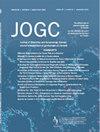The Role of Simulation in Knowledge Dissemination and Improving Clinical Outcomes for the Management of Impacted Fetal Head at Cesarean Delivery
IF 2.2
Q2 OBSTETRICS & GYNECOLOGY
引用次数: 0
Abstract
Objectives
Impacted fetal head (IFH) is an obstetrical emergency associated with maternal and fetal morbidity. The aim of this study was to assess the role of a simulation session on the management of IFH at cesarean delivery as a method of disseminating guideline recommendations to obstetricians. The secondary aim was to assess the clinical impact of this initiative.
Methods
An IFH simulation session based on recent guidelines was developed using the PROMPT FLEX enhanced cesarean delivery model to review pull, push, and Patwardhan techniques. All faculty and obstetrical trainees were invited to participate. Participants completed baseline and post-session surveys. Survey scores were compared using a paired t-test and analysis of variance. To assess clinical impact, a 6-month pre/post cohort of all patients who underwent second-stage cesarean delivery was assembled. Multivariable robust Poisson regression models were used to estimate the relative risk of a composite maternal/neonatal morbidity outcome pre-and post-implementation.
Results
Thirty-four clinicians participated (21 trainees, 13 faculty). Trainees demonstrated significant, sustained improvement in knowledge following participation (P < 0.001). Trainees reported sustained comfort with push and pull techniques, but comfort with Patwardhan waned (P = 0.03). Faculty comfort was unchanged for push and pull techniques but significantly improved for Patwardhan (P = 0.01). The adjusted relative risk of composite maternal/neonatal morbidity following implementation was unchanged (relative risk 1.03; 95% CI 0.75–1.42). However, neonatal intensive care unit admissions were reduced (P = 0.01).
Conclusions
An IFH simulation session was associated with improvement in trainee knowledge and faculty and trainee comfort with the Patwardhan technique. Simulation may be an effective tool to improve obstetrician comfort with novel recommendations.
模拟在知识传播和改善剖宫产阻生胎头处理临床结果中的作用。
目的:阻生胎头(IFH)是一种与母体和胎儿相关的产科急诊。本研究的目的是评估剖宫产中IFH管理的模拟会议作为向产科医生传播指南建议的方法的作用。第二个目的是评估这一举措的临床影响。方法:基于最新指南的IFH模拟会话使用PROMPT FLEX增强剖宫产模型来回顾拉、推和Patwardhan技术。所有的教师和产科实习生都被邀请参加。参与者完成了基线和会后调查。调查得分比较采用配对t检验和方差分析。为了评估临床影响,对所有接受第二阶段剖宫产的患者进行了为期6个月的前后队列研究。使用多变量稳健泊松回归模型来估计实施前后孕产妇/新生儿复合发病率结局的相对风险。结果:34名临床医生参与其中(实习21人,教师13人)。学员在参与后表现出显著的、持续的知识改善(P < 0.001)。学员报告推拉技术的持续舒适水平,但帕特瓦丹技术的舒适度下降(P = 0.03)。推拉技术的教师舒适度没有变化,但Patwardhan显著改善(P = 0.01)。实施后调整后的孕产妇/新生儿复合发病率相对风险没有变化(RR 1.03, 95% CI 0.75-1.42)。新生儿重症监护病房入院率降低(P = 0.01)。结论:IFH模拟课程与受训人员的知识和能力的提高以及受训人员对Patwardhan技术的适应程度有关。模拟可能是提高产科医生舒适度的有效工具。
本文章由计算机程序翻译,如有差异,请以英文原文为准。
求助全文
约1分钟内获得全文
求助全文
来源期刊

Journal of obstetrics and gynaecology Canada
OBSTETRICS & GYNECOLOGY-
CiteScore
3.30
自引率
5.60%
发文量
302
审稿时长
32 days
期刊介绍:
Journal of Obstetrics and Gynaecology Canada (JOGC) is Canada"s peer-reviewed journal of obstetrics, gynaecology, and women"s health. Each monthly issue contains original research articles, reviews, case reports, commentaries, and editorials on all aspects of reproductive health. JOGC is the original publication source of evidence-based clinical guidelines, committee opinions, and policy statements that derive from standing or ad hoc committees of the Society of Obstetricians and Gynaecologists of Canada. JOGC is included in the National Library of Medicine"s MEDLINE database, and abstracts from JOGC are accessible on PubMed.
 求助内容:
求助内容: 应助结果提醒方式:
应助结果提醒方式:


